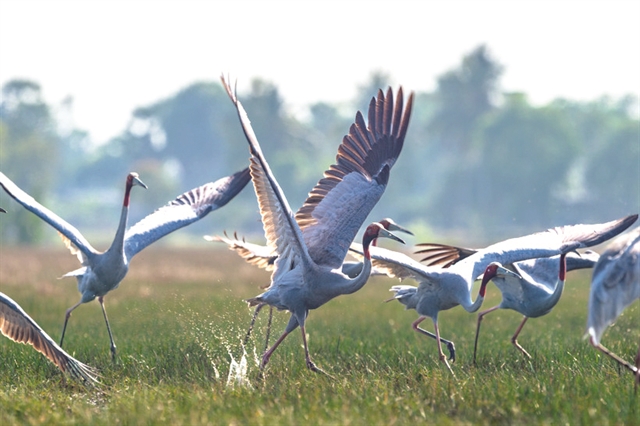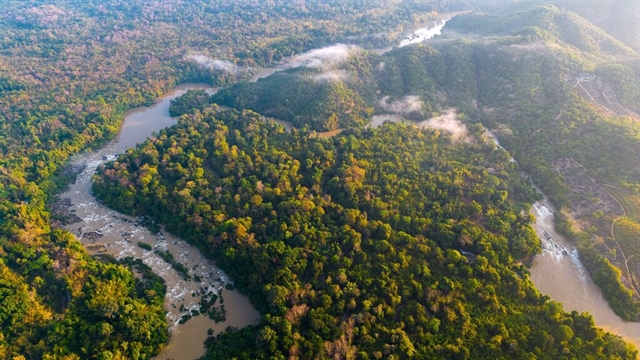 Inner Sanctum
Inner Sanctum

The International Union for Conservation of Nature (IUCN) Green List is a global initiative aimed at increasing the number of protected and conserved areas that deliver long-term benefits for local people and nature. In Việt Nam, Cát Tiên National Park and Vân Long Wetland Nature Reserve have been Green Listed.
Jake Brunner, head of IUCN’s Lower Mekong Sub-region, spoke with Việt Nam News reporter Trần Khánh An about the significance of IUCN Green List status for Việt Nam’s protected areas.
 |
| CONSERVATIONIST: Jake Brunner, head of IUCN’s Lower Mekong Sub-region. Photo courtesy of IUCN |
Inner Sanctum: What do you think about Việt Nam having two areas on Green List?
Achieving Green List status is not just about earning a title; it symbolises a long-term commitment. The evidence required to meet the Green List’s 17 criteria is rigorous. The fact that two of the three Green List sites in Southeast Asia are in Việt Nam reflects the government’s dedication to improving the management of protected areas. We are excited to collaborate with more areas in Việt Nam to secure the Green List status by the end of 2025.
Inner Sanctum: What are the benefits of joining the IUCN Green List for Việt Nam?
The primary benefit is that the Green List measures and reports on management effectiveness within protected areas. It goes beyond simply counting protected areas or measuring forest cover; it assesses biodiversity, management quality, and the overall health of nature. The Green List allows regions to document these factors in a way that meets international standards.
Another significant advantage is the required documentation. Conservation areas need to maintain evidence that meets the 17 globally consistent criteria and 50 indicators. This involves assembling reports, camera trap footage, photographs, surveys, and more, creating an electronic library of data. This organised documentation means that if authorities, donors, or the press request information, it’s readily available.
Lastly, achieving Green List status can open doors to funding and technical cooperation. While the Green List is a diagnostic tool and does not mean everything is perfect, it identifies gaps that can be addressed through financial or technical assistance.
 |
| Cát Tiên National Park spreads out over an area of more than 82,000ha in the provinces of Đồng Nai, Lâm Đồng and Bình Phước. The park is a gorgeous natural site rich in biodiversity. VNA/VNS Photo Hoa Anh |
Inner Sanctum: How does IUCN contribute to the global biodiversity framework?
The IUCN is a signatory to the post-2020 global biodiversity framework, which was adopted in December 2022. We are committed to achieving the targets outlined in this framework.
In Việt Nam, protected areas cover about seven per cent of the country’s land area, with the goal of increasing this to nine per cent. However, expanding protected areas is challenging. I believe the best way to conserve biodiversity is to invest in the management of existing protected areas, which remain rich in biodiversity. Joining the Green List helps measure and improve management effectiveness, from wildlife protection to relations with local communities and tourism.
The fact that two of Việt Nam’s protected areas have achieved Green List status is a clear demonstration of high-quality management that contributes to the global biodiversity framework.
Inner Sanctum: How do conserved areas sustain their IUCN Green List recognition?
Achieving Green List status is only the beginning. From there, a process of continuous improvement is required. Some of these improvements can be managed by existing staff and government resources, while others may need additional technical and financial support. For example, there are research gaps that still need to be filled, such as anti-poaching efforts, which were identified as particularly important.
The Green List certification lasts for five years, with a midterm review in the second or third year. After that, areas must resubmit their documentation and demonstrate continued compliance with the criteria. Incremental improvements, such as addressing research gaps and enhancing protection measures, are essential to maintaining Green List status. VNS